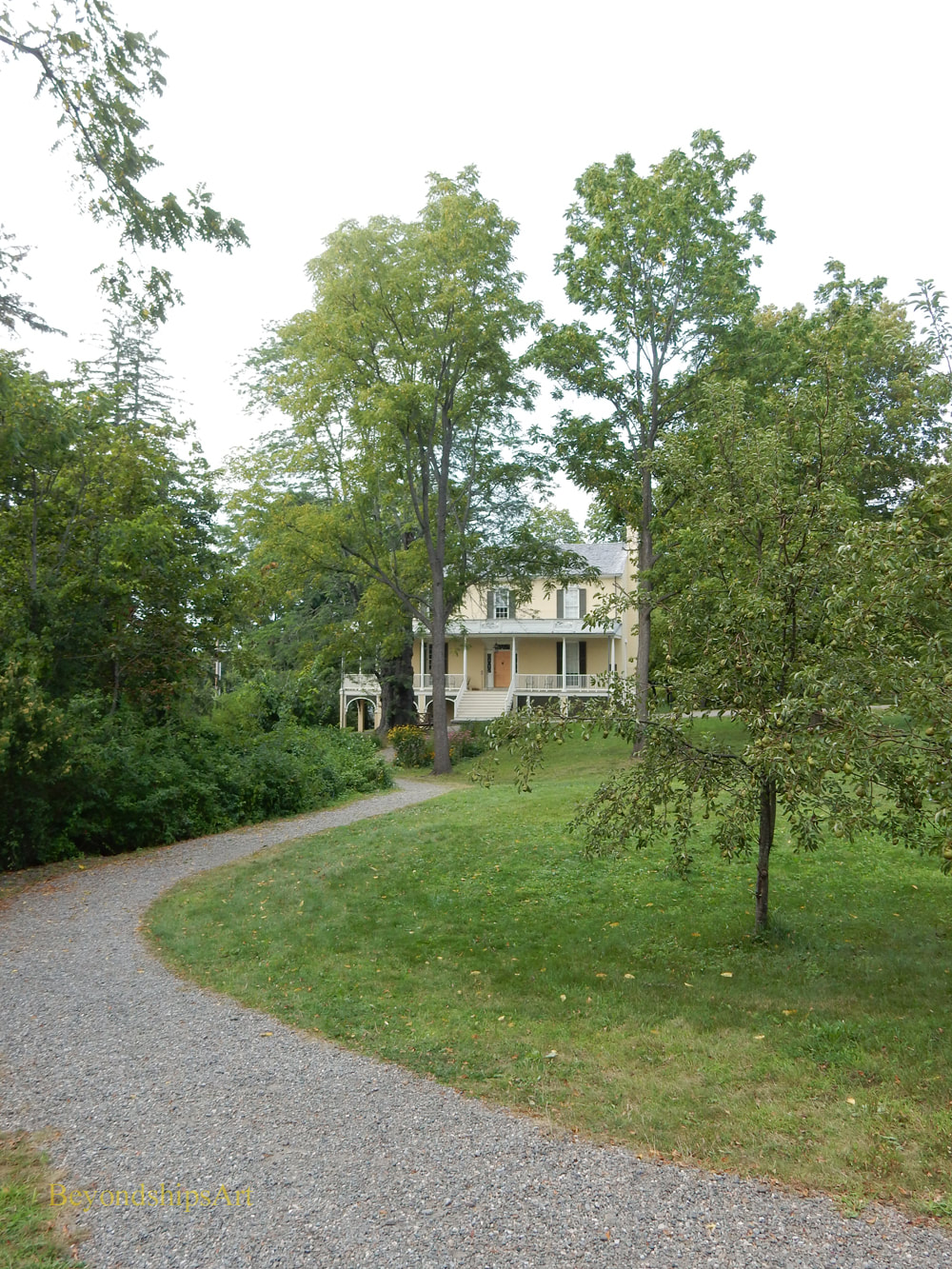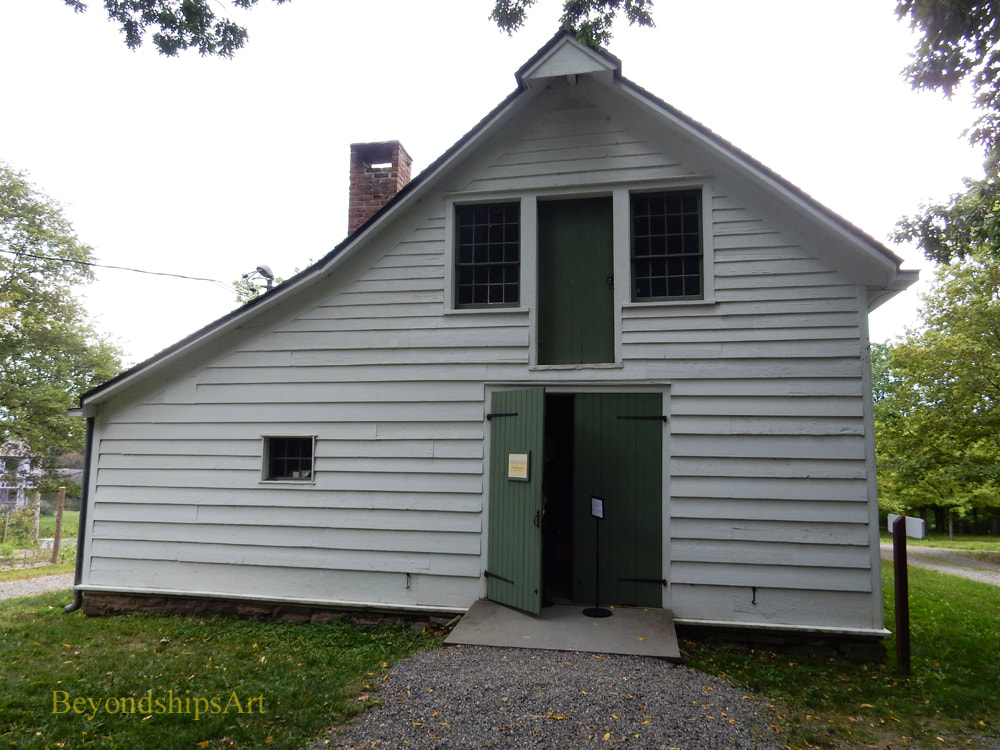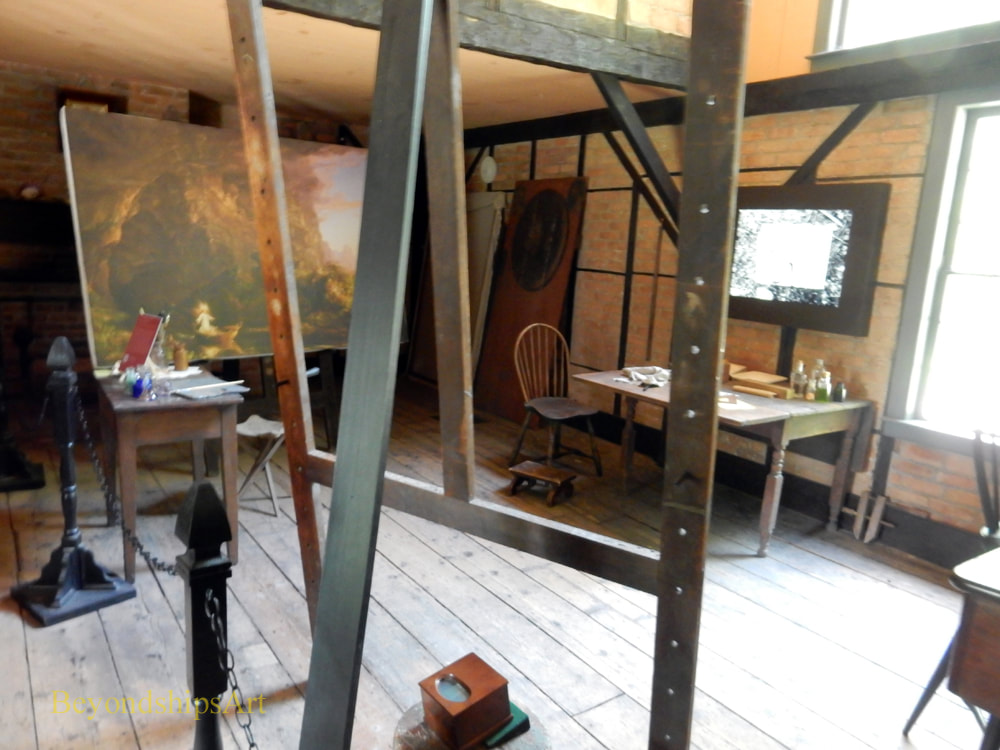|
The Thomas Cole Historical Site in Catskill, New York, preserves the home of Thomas Cole, the founder of the Hudson River School of landscape painting. In addition to several of Cole's paintings and various artifacts relating to the artist, the site hosts visiting exhibitions of works by other artists.
In the first half of the 19th century, Cole became America's best-known artist based upon his paintings of the American wilderness. These were largely based upon scenes he encountered during expeditions to upper New York State. To gather material for his paintings, he often spent the summer exploring the Hudson Valley and the Catskill Mountains. In 1832, he began renting a cottage on a farm in the village of Catskill to act as a base of operations during his summer expeditions. His primary studio, however, remained in Manhattan. Ceder Grove, as the farm was known, was the home of John A. Thomson and his extended family. Its income came primarily from orchards but there were other crops and some livestock. Of particular interest to Cole were its views of the mountains in the distance and the nearby Hudson. Cole also fell in love with Maria Bartow. She was one of John Thomson's nieces. Orphaned, she had come to live at Cedar Grove. The two married in 1836 and Cole became a permanent resident of Catskill. In order to build a home for his new family, Cole purchased some property from Thomson. However, the new house was never built and Cole eventually became master of the Cedar Groove house. In 1839, he built a studio not far from the house. This was followed by a larger studio in 1846. After Cole's death in 1848, Cedar Groove became a place of pilgrimage for artists. Nonetheless, by the 1880s, the family was having financial difficulties and Frederic Church, who had been a pupil of Cole, stepped in with assistance. Over the years, much of the property was sold off. The construction of the nearby Rip Van Winkle bridge over the Hudson in the 1930s also threatened the site as an approach road cut through its farmland. Still, enough remained of historic interest that in 1965, it was declared a National Historic Landmark. In 1979 when the property passed out of the hands of the family, it attracted historic preservationists. Still, it was not until 1998 when the property was purchased by the Greene County Historical Society that restoration work began in earnest. The following year, the property was designated a National Historic Site and in 2001, it was opened to the public. Today, visitors to the site can see three substantial buildings as well as a few small outbuildings surrounded by lawns and tall trees. The main house, done in the federal style, was begun in 1815 by the Thomson family. Two floors of the house are open to the public. Paintings by Cole, his daughter Sarah, and contemporaries hang both in the period-decorated rooms as well as in the galleries on the upper floor. During restoration, decorative borders designed by Cole were discovered under the wall paint in the parlors. Visitors can also see a video about Cole that is shown in one of the rooms. Cole's 1839 studio has been preserved. Here, one can see Cole's easel and various implements he used in creating his works. The building also houses the site's bookshop. The 1846 studio was demolished in the 1970s. However, a new structure has been built on the footprint of that building based upon photographs and descriptions of the original. Inside, the building is a gallery for works by Cole and for visiting exhibitions. Given the connection between the two artists, comparisons are often made between Cedar Grove and Frederic Church's Olana, which is just across the river. Cedar Groove is a much more modest house and property than Olana. However, it is from a slightly earlier period before mansions such as Olana became the fashion. Furthermore, although Cole was famous during his lifetime, his death at an early age cut his career was much shorter than Church's and unlike Church he did not come from a wealthy background. Nonetheless, Cedar Groove is significant because of its association with two major American artists (Church lived at Cedar Groove when he was Cole's pupil) as well as its glimpse into early Victorian life in America. For information on visiting, see the website of the Thomas Cole National Historic Site. |
Above: The main house.
Above: One of the first floor parlors of the main house.
Below: A gallery on the upper floor. Above: "The Old Studio" built in 1839.
Below: Cole's easels in the Old Studio. Above: The recreated "New Studio".
|
|
|
|
Places to see art - - New York State - - Olana





